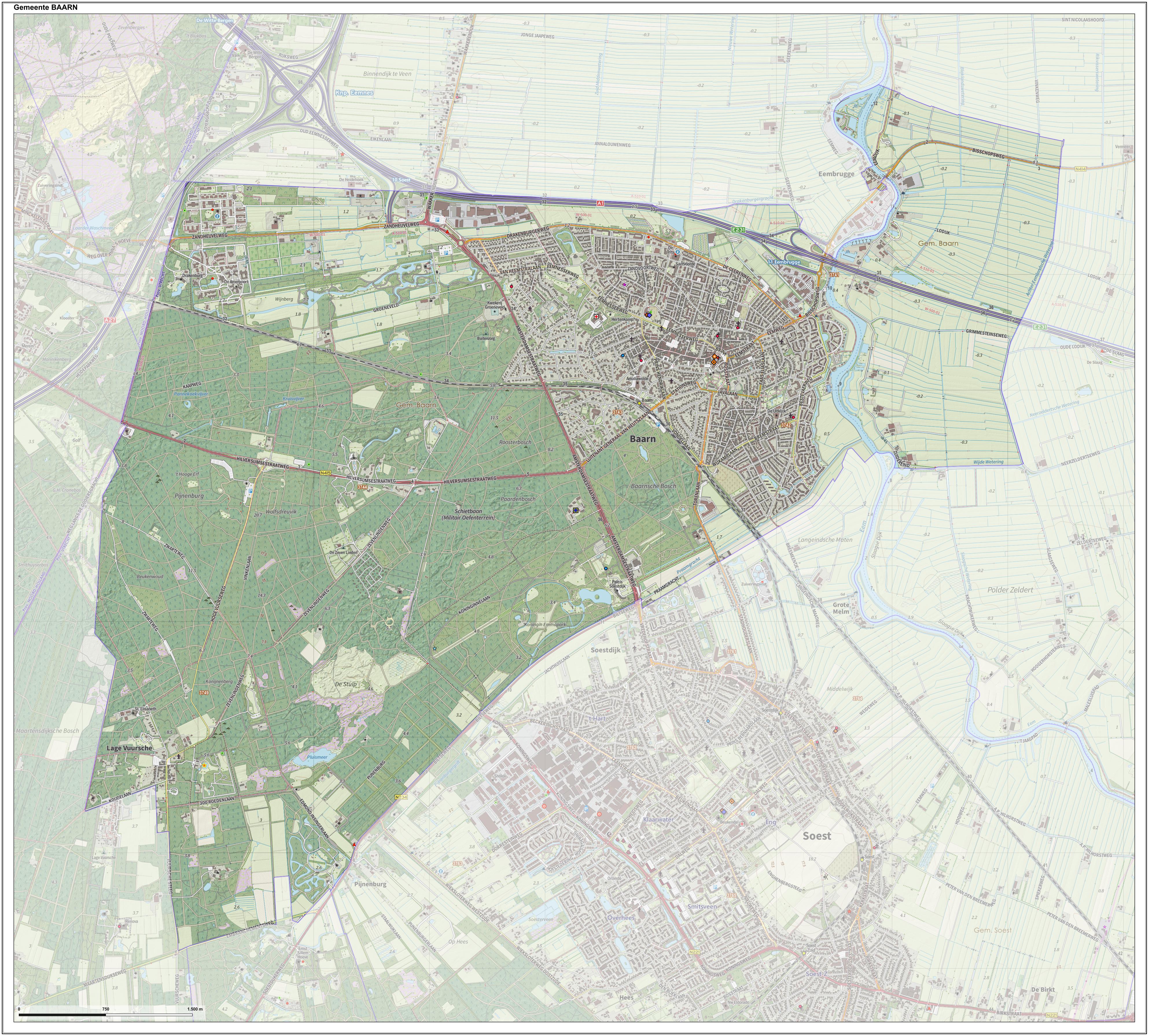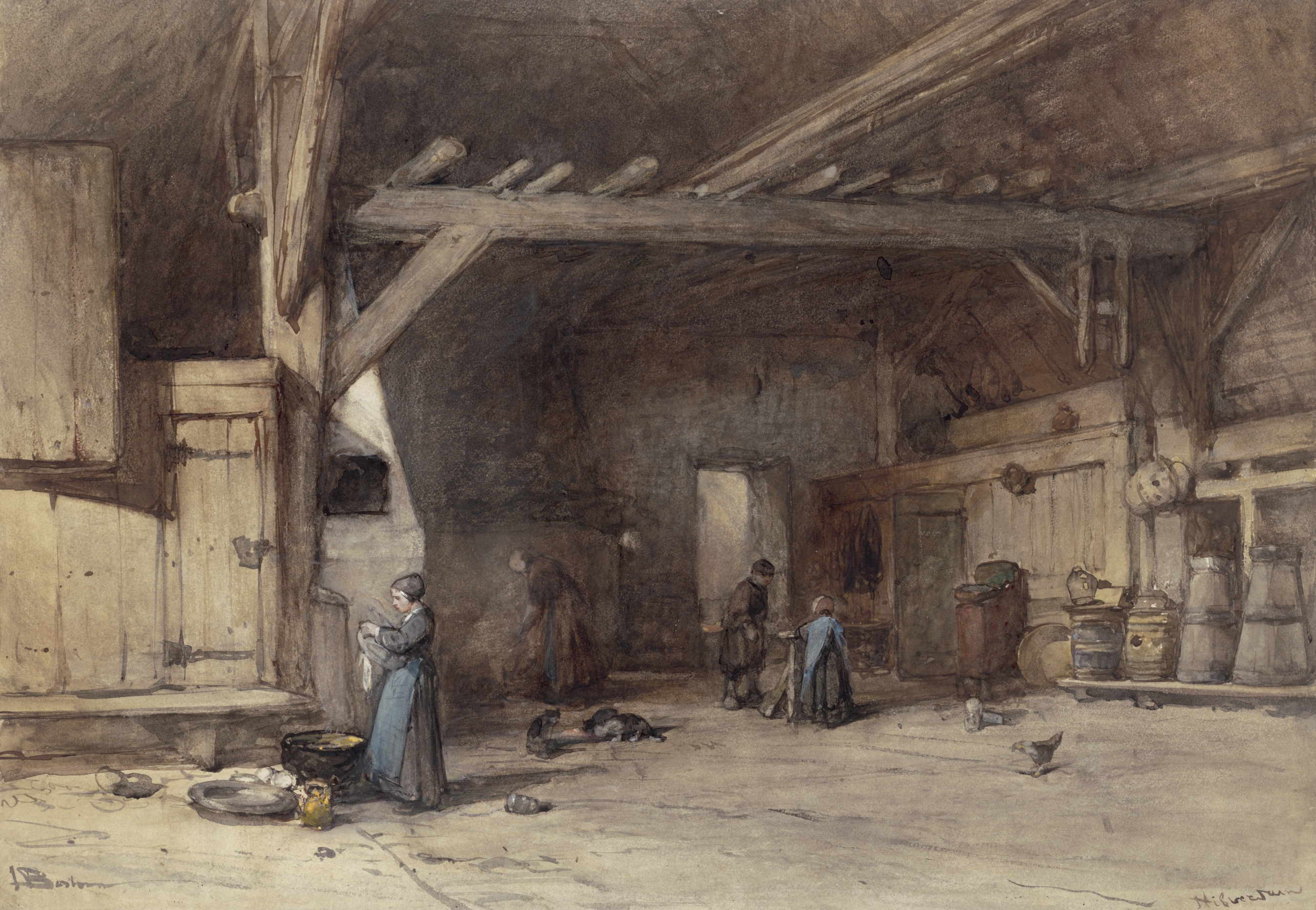|
Baarnse Bos
The Baarnse Bos is a park/forest in the southern part of the municipality of Baarn, the province of Utrecht (province), the Netherlands. The area of the forest if approximately and is adjacent to the Soestdijk Palace. The forest is limited by Amsterdamse Straatweg ( N221) in the west, Lt. Generaal van Heutszlaan in the north, the railway connecting Amsterdam and Amersfoot, as well as Torenlaan in the east, and Praamgracht in the south. The Soestdijk Palace is across Amsterdamse Straatweg, and the Baarnse Bos continues across this road as a large forest reaching Hilversum in the west. The Baarnse Bos was designed as a French landscape garden between 1733 and 1758. At the time, it was built around the land estate De Eult. In 1758, the estate, together with the forest, was transferred to the Dutch royal family The monarchy of the Netherlands is a constitutional monarchy. As such, the role and position of the monarch are governed by the Constitution of the Netherlands. Consequen ... [...More Info...] [...Related Items...] OR: [Wikipedia] [Google] [Baidu] |
Baarn
Baarn () is a municipality and a town in the Netherlands, near Hilversum in the province of Utrecht. The municipality of Baarn The municipality of Baarn consists of the following towns: Baarn, Eembrugge, Lage Vuursche. The town of Baarn Baarn, the main town of the municipality, received city rights in 1391. The town lies about 8 km east of Hilversum. In 2001, the town of Baarn had a population of 22,871. The urban area of the town was , and consisted of 10,076 residences.Statistics Netherlands (CBS), ''Bevolkingskernen in Nederland 2001'' . Statistics are for the continuous built-up area. The royal family owns several houses around Baarn. The Soestdijk Palace in Baarn was the home of Queen Emma, Queen Juliana and Juliana's husband prince Bernard. Crown prince Willem Alexander and his brothers attended school ('' Nieuwe Baarnse School'' and '' Het Baarnsch Lyceum'') in Baarn when Queen Beatrix (then princess) and her family lived at Castle Drakesteijn in the village ... [...More Info...] [...Related Items...] OR: [Wikipedia] [Google] [Baidu] |
Utrecht (province)
Utrecht (), officially the Province of Utrecht ( nl, Provincie Utrecht, link=no), is a province of the Netherlands. It is located in the centre of the country, bordering the Eemmeer in the north-east, the province of Gelderland in the east and south-east, the province of South Holland in the west and south-west and the province of North Holland in the north-west and north. The province of Utrecht has a population of 1,353,596 as of November 2019. It has a land area of approximately . Apart from its eponymous capital, major cities and towns in the province are Amersfoort, Houten, IJsselstein, Nieuwegein, Veenendaal and Zeist. The busiest railway station in the Netherlands, Utrecht Centraal, is located in the province of Utrecht. History The Bishopric of Utrecht was established in 695 when Saint Willibrord was consecrated bishop of the Frisians at Rome by Pope Sergius I. With the consent of the Frankish ruler, Pippin of Herstal, he settled in an old Roman fort in Utrecht. A ... [...More Info...] [...Related Items...] OR: [Wikipedia] [Google] [Baidu] |
Soestdijk Palace
Soestdijk Palace ( nl, Paleis Soestdijk ) is a palace formerly belonging to the House of Orange-Nassau, Dutch Royal Family. It consists of a central block and two wings. Although named after the village of Soestdijk, which is largely in the municipality of Soest (Netherlands), Soest, the Soestdijk Palace is just north of the border in the municipality of Baarn in the province of Utrecht (province), Utrecht. It was the home for over six decades of Juliana of the Netherlands, Queen Juliana and her husband, Prince Bernhard of the Netherlands, Prince Bernhard until their deaths in 2004. History De Graeff In the middle of the seventeenth century the Country house on the ''Zoestdijk'' was built for Cornelis de Graeff. In the years 1655-1660 De Graeff was involved in the education of Willem III of Orange, as can be seen from his letters in Soestdijk to the States General of the Netherlands, States-General and his nephew Johan de Witt. During the summers the family spent a lot of thei ... [...More Info...] [...Related Items...] OR: [Wikipedia] [Google] [Baidu] |
Provincial Road N221 (Netherlands)
Provincial may refer to: Government & Administration * Provincial capitals, an administrative sub-national capital of a country * Provincial city (other) * Provincial minister (other) * Provincial Secretary, a position in Canadian government * Member of Provincial Parliament (other), a title for legislators in Ontario, Canada as well as Eastern Cape Province, South Africa. * Provincial council (other), various meanings * Sub-provincial city in the People's Republic of China Companies * The Provincial sector of British Rail, which was later renamed Regional Railways * Provincial Airlines, a Canadian airline * Provincial Insurance Company, a former insurance company in the United Kingdom Other Uses * Provincial Osorno, a football club from Chile * Provincial examinations, a school-leaving exam in British Columbia, Canada * A provincial superior of a religious order * Provincial park, the equivalent of national parks in the Canadian pro ... [...More Info...] [...Related Items...] OR: [Wikipedia] [Google] [Baidu] |
Hilversum
Hilversum () is a city and municipality in the province of North Holland, Netherlands. Located in the heart of the Gooi, it is the largest urban centre in that area. It is surrounded by heathland, woods, meadows, lakes, and smaller towns. Hilversum is part of the Randstad, one of the largest conurbations in Europe, and the Amsterdam metropolitan area; it is about 22 km from the centre of Amsterdam and about 15 km from the city of Utrecht. The city is home to the headquarters, studios, and broadcast stations of several major radio, television, and newspaper companies, such as the NOS. This means that Hilversum is known for being the ''mediastad'' (media city) of the Netherlands. Town Hilversum lies south-east of Amsterdam and north of Utrecht. The town is known for its architecturally important Town Hall (Raadhuis Hilversum), designed by Willem Marinus Dudok and built in 1931. Hilversum has one public library, two swimming pools (Van Hellemond Sport and De Lieberg), a numbe ... [...More Info...] [...Related Items...] OR: [Wikipedia] [Google] [Baidu] |
French Landscape Garden
The French landscape garden (french: jardin anglais, jardin à l'anglaise, jardin paysager, jardin pittoresque, jardin anglo-chinois) is a style of garden inspired by idealized romantic landscapes and the paintings of Hubert Robert, Claude Lorrain and Nicolas Poussin, European ideas about Chinese gardens, and the philosophy of Jean-Jacques Rousseau. The style originated in England as the English landscape garden in the early 18th century, and spread to France where, in the second half of the 18th century and early 19th century, it gradually replaced the rigidly clipped and geometrical French formal garden (). The decline of the ''jardin à la française'' Even during the lifetime of Louis XIV and his gardens of Versailles, the formal, symmetrical was criticized by writers La Fontaine, Madame de Sévigné, Fénelon and Saint-Simon for imposing tyranny over nature; demonstrating human mastery over nature was indeed part of its intention. In 1709, in his influential book on ... [...More Info...] [...Related Items...] OR: [Wikipedia] [Google] [Baidu] |
Monarchy Of The Netherlands
The monarchy of the Netherlands is a constitutional monarchy. As such, the role and position of the monarch are governed by the Constitution of the Netherlands. Consequently, a large portion of it is devoted to the monarch. Roughly a third of the document explains the succession, mechanisms of accession & abdication to the throne, and the roles & duties of the monarch. This includes the formalities of communication between the States-General and the monarch's role in creating laws. The Kingdom of the Netherlands has been an independent monarchy since 16 March 1815, but its once sovereign provinces had been intermittently "governed" by members of the House of Orange-Nassau and the House of Nassau from 1559, when Philip II of Spain appointed William of Orange as stadtholder, until 1747. William became the leader of the Dutch Revolt and the independent Dutch Republic. As a stadtholder, he was followed by several of his descendants. In 1747, the function of stadtholder became ... [...More Info...] [...Related Items...] OR: [Wikipedia] [Google] [Baidu] |
Staatsbosbeheer
Staatsbosbeheer, founded in 1899, is a Dutch government organization for forestry and the management of nature reserves. Staatsbosbeheer currently oversees over 250,000 hectares of land in the Netherlands. Usually this land is open to the public for recreational purposes, but restrictions often apply. Examples are the compulsory use of a leash when bringing a dog, or daytime access only. The organization has been criticized for not taking close enough care of its lands, or for interfering with political decisions, but news reports are generally positive or simply report public service announcements from the organization. Example:De ruigpootuil broedt weer in Nederland. (July 28, 2008). ''NOS''. Retrieved July 31, 2008. While the literal translation of the name would be 'State Forest Management', forests only make up 900 square kilometres of the total land under supervision. The remaining land consists of varying landscapes such as dunes, polders and wetlands. Chairpersons Not ... [...More Info...] [...Related Items...] OR: [Wikipedia] [Google] [Baidu] |
Forests Of The Netherlands
A forest is an area of land dominated by trees. Hundreds of definitions of forest are used throughout the world, incorporating factors such as tree density, tree height, land use, legal standing, and ecological function. The United Nations' Food and Agriculture Organization (FAO) defines a forest as, "Land spanning more than 0.5 hectares with trees higher than 5 meters and a canopy cover of more than 10 percent, or trees able to reach these thresholds ''in situ''. It does not include land that is predominantly under agricultural or urban use." Using this definition, '' Global Forest Resources Assessment 2020'' (FRA 2020) found that forests covered , or approximately 31 percent of the world's land area in 2020. Forests are the predominant terrestrial ecosystem of Earth, and are found around the globe. More than half of the world's forests are found in only five countries (Brazil, Canada, China, Russia, and the United States). The largest share of forests (45 percent) are in th ... [...More Info...] [...Related Items...] OR: [Wikipedia] [Google] [Baidu] |




.jpg)